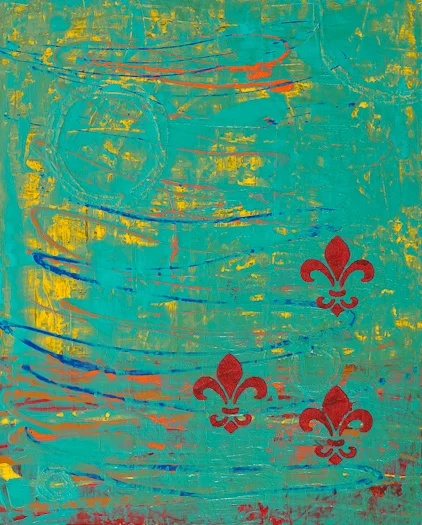It's not called plagiarism. It's called teaching.
It’s Not Called Plagiarism. It’s Called Teaching.
Recently I stumbled across a blog post by a printmaker who was pretty angry about one of her students working in a similar fashion to the way she worked. She refers to students making copies of "her" work using the techniques she uses. Now mind you, this is after she taught them to do it. The students paid her for her expertise and she agreed to teach them how to make prints, in the same way she makes prints.
This is printmaking, not painting. In printmaking the processes go back hundreds, if not thousands of years. Granted, you can use fancy materials or innovative cutting techniques. Maybe even come up with a cool new way to etch without using toxic chemicals (see Keith Howard's innovative techniques for non-toxic etching). But the bottom line is, you are working on some sort of "plate" (whether you are cutting it, etching it, painting it) and transferring the image to some sort of surface like paper, cloth, aluminum, plastic and so on.
Pretty basic concept, right? Why is this printmaker going on about being "plagiarized"? Is it because the students used the same color of ink? Maybe the images are similar? I'm not sure I entirely understand the problem.
"St. Eligius in His Workshop" Attributed to Master of Balaam [Public domain], via Wikimedia Commons
Medieval Guilds
Students emulating their masters is a long and honored tradition. In the Middle Ages, students or apprentices, would work in a guild under the knowledgable eye of the master, gaining skill and experience with their craft. It took many years to become a master and not until the apprentice could recreate the master's work perfectly, would they be allowed to move into that honored role. So we now have works "from the school of..." in museums. Remember in the Middle Ages, artisans were mostly anonymous. There were no big artist egos...yet.
Fast forward to the Renaissance and the Artist with a capital "A" is born. Michelangelo, Leonardo, Caravaggio - we refer to them with one name - like rock stars. And indeed, they were the rock stars of their time. Stories even refer to Leonardo wearing purple tights. Sounds like Mick Jagger to me.
At any rate, I'm still wondering why the above-mentioned printmaker was so upset. As a teacher for many, many years I've seen lots of students copy my work. Some of them have even become fairly successful at selling work that resembles mine from a particular period in my career. I can pick up just about any big glossy art magazine, turn to a given page on a "famous" artist, and find a painting that resembles something one of my students has done. In fact, I recently gave a "blind test" to my advanced painting students. I put two paintings side by side and asked which one was the million dollar painting and which was the one selling online for four hundred bucks. About half of the class got it wrong. They simply couldn't tell the difference between an art superstar and a regular working artist.
I love teaching. I love interacting with the students and watching them grow. I love how it impacts my own work - keeps me on my toes technically. I love it when my students are successful and have shows and send me flowers to thank me for helping them. It brings tears to my eyes when I see the light go on for a new student. That aha! moment when they really get it.
So what's the moral of this story? I'm not sure. But maybe, just maybe, if you are a teacher and you don't want people to copy your work then perhaps you shouldn't teach them how to do it.
By the way, this image right here? That's one of my paintings. Why don't you make a copy of it?
Don't teach people to do what you do if you don't want them to do it.
Want more tips on painting? Check out my book.
Want to know what I use in the studio? Check out my Product Recommendations.


!["St. Eligius in His Workshop" Attributed to Master of Balaam [Public domain], via Wikimedia Commons](https://images.squarespace-cdn.com/content/v1/55f4718fe4b01e51d6e77c05/1527795408940-J5BORMUYIJ6XT5Q11V7Q/medievalworkshop.jpg)
